Mother Mary


Mother Mary’s Life on Earth
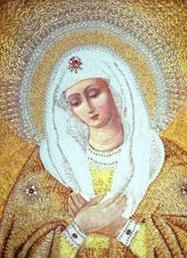
Over two millennia separate us from the times when Mother Mary walked on Earth. Today, it is hard to believe that she had an earthly life, filled with human worries, joys and sufferings. We are used to perceiving her as an Ascended Master, yet, she had worldly qualities as well. The stories and reminiscences of Mother Mary’s contemporaries form a fairly visual image of her; she was of average height, had golden hair and quick eyes, her pupils were the color of a black olive, her eyebrows were curved and moderately black, her gaze was strict, but not stern; she had an elongated nose, blooming lips, tranquil voice, somewhat oblong face, long arms and fingers. Her gait was quiet, dignified, but firm; the clothing she wore was naturally colored, modest, devoid of luxury and splendor. She was short spoken, and did not allow any careless words or improper actions, so her entire appearance was the manifestation of the soul, the embodiment of purity.
Mary’s contemporaries pointed out her perfect spiritual qualities. Her rule was not to insult or offend anyone, to be good-hearted to everyone, to respect the elder, not to envy those who are equal to her, to avoid boasting, to be reasonable, and to appreciate virtue. She was never proud in front of a modest person, never laughed at the weak, and never avoided the needy. When talking to others, she carried herself respectably, did not become outraged or angry, and was completely unpretentious.
The Holy Virgin’s entire life on Earth lasted 72 years, based on the calculations of the holy church fathers and authoritative ecclesiastic sources.
Luke the Evangelist, who had known Saint Virgin Mary well, wrote down several important events of her early years of life based on her words. Being a doctor and an artist, based on the legend, he created her portrait-icon, from which iconographers later made copies.
Mother Mary’s parents lived in the city of Nazareth, which was three days of travel away from Jerusalem. Her father Joachim came from the line of King David [1] Her mother Anne was the youngest daughter of a priest from the line of Aaron [2] pontiff. Her elder sister Sofia had

a daughter named Elisabeth, who later married priest Zechariah and became the mother of John the Baptist. Therefore, Elisabeth was Mother Mary’s cousin, and John the Baptist was Jesus’s second cousin by blood.
Joachim and Anne were righteous people, known for their humbleness and mercy to others. They lived until an old age and did not have children, which made them very upset. Despite their old age, they did not stop asking God to send them a child. They gave a promise: in the event that they do have a baby, they would devote him or her to serving God. Finally, on September 8th their daughter was born. She was given the name Mary.
When Mary turned three years old, her righteous parents prepared to carry out their vow: they took their daughter to the church of Jerusalem to devote her to God.
Besides its sacred buildings, the church also had many courts and narthexes that contained various rooms for people who carried out certain sacred services. Widows and virgins who led an abstinent life, also lived in the church buildings.
Mary was left to live at the church. Under the patronage of experienced lady mentors, she and other girls learned the law of the Lord and crafts, prayed and read the Holy Scriptures. Mary had an acute mind; she liked to study and everyone admired her prudence. The crafts that she mastered included flax and wool spinning. She also liked to do silk embroidery, especially on priest’s clothing for church services, and was excellent in everything she did.
Mary lived at the church for 11 years and grew up into a very righteous, modest, hard working person, who was devoted to God in every way. Willing to only serve God, she gave a vow not to ever get married and to stay a Virgin for the rest of her life.
According to the law that existed at the time, Mary could no longer stay at the church, and was supposed to get married. In order to obey the marriage law, priest Zechariah, who knew and respected her vow, formally got her engaged to a remote relative, an 80-year old widower Joseph [3]. Joseph gave a promise to take care of Mary and safeguard her virginity. Joseph lived in the town of Nazareth. He also came from the royal family of King David, but was not rich and worked as a carpenter. From the few stories about Joseph in the Holy Scriptures, it is obvious that he had a mature character: he was quite firm in his aspirations to the Holy, determined, high-hearted, sincere, modest, pure, peaceable, attentive to the voice of his conscience and decrees from above. Joseph had children from his first marriage: four sons, who are called Jesus’s “brothers” in the testaments, and two daughters. One of the daughters, Mary, lived in her father’s house. When Virgin Mary, after getting engaged with Joseph, came to his home, she became friends with his daughter and treated her like her sister.
According to the story, in Joseph’s house, Virgin Mary received the Glad Tidings from Archangel Gabriel, that the Lord had chosen her to be the Mother of the world’s Savior.
In the book “Human aura” dictated through the messengers Mark and Elizabeth Profet, explains the essence of immaculate conception:
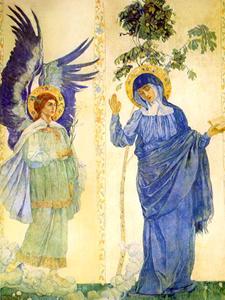
«When the Holy Spirit came upon the virgin consciousness of Mary, who embodied the ray of the Mother, and the power of the Supreme Lord entered her being, the energies of Alpha and Omega merged in her womb in order to fulfill the promise of the coming of the Messiah. By being devoted to the Ray of the Mother and by the immaculate image of Christ’s soul, she magnetized a powerful focus of the Omega polarity in her four lower bodies and chakras.
The realization of God as a Mother was so real in Mary’s consciousness, and her identification with the Mother flame was so full, that in the true meaning of her “self” as God she became God’s realization of Himself as a Mother on the material plane. Hence Gabriel’s greeting: “Rejoice Blessed Mary, the Lord is with You! Blessed are You among women».
This event took place during the sixth month after Archangel Gabriel’s visit to priest Zechariah about the birth of his son – the future Prophet John the Baptist [4]
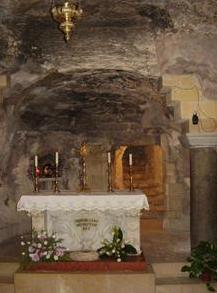
The year of Jesus’s birth could not be determined exactly even in those ages due to various changes in time tracking. In the Gospel according to St. Luke, it is said that, before Christ was born, the emperor had ordered that a census of the population be held. In the Jewish tradition, the census was done by the tribes and clans, each of which had certain towns and ancestral homes where they were to be registered. David’s place of birth was Bethlehem. Therefore, Joseph and Mary, as David’s descendants, had to travel there to participate in the census. The town was small and overfilled with people who came to register in the census. As none of the houses had any space for them, Joseph and Mary had to find shelter in the surrounding area. Close to the Bethlehem gates, there was a cave in a rocky mountain, where the shepherds put cattle during storms or escaped from extreme heat in the summer. There was a hollow in one of the cave walls which served as a crib for cattle. Mary and Joseph had no choice but to use that manger as a shelter. That is where the Holy Virgin delivered Jesus on the 25th of December, painlessly, without anybody else’s help.
Even before the birth of the Messiah was revealed in Judea, it was known about in the East. The Three Wise Men [5] of the East, led by the Star of Bethlehem, came to the birth place of Jesus to greet him and to bring the poor family some material aid. Would they expect to find the Baby Jesus and His Mother “amidst camel waste and roaring donkeys? The human mind was trying to place the future Prophet at least near a church or among majestic walls.” [6]
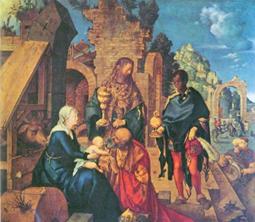
Before dawn, the wise men put on their best clothes and went through the cote into the small dwelling next to the rock. Mother Mary with Jesus in her arms was sitting by the fire. The wise men gave her the treasures and sacred items, and warned her that she would need to travel. Herod, who was the king at that time, had been warned shortly before that he would lose his throne. Knowing the prophecy, that the “new King of Judea” was to be born soon, he made a cruel order to kill all infants in Bethlehem and the neighboring territories. Joseph and Mary took the Baby to Egypt in order to save Jesus from Herod’s evil plan.
After returning from Egypt, the family settled in Nazareth again. Joseph continued his carpentry work, “feeding with the work of his hands.” As he grew, Jesus shared the work with Joseph so eagerly that people called him not only the carpenter’s son, but also simply the carpenter.
Mother Mary’s life was spent on the same activities with the same humility and piety as before. There is a legend, according to which, she taught reading and writing to children of both genders, diligently served the poor, gave donations, and took care of the sick and helped orphans and widows. She was tireless in her crafts as before and performed them with care, making clothes for herself and for her son. Later, among other activities, Mother Mary wove a seamless red robe, which was wonderfully made and which served Jesus as his permanent clothes.
Mother Mary saw Her son off on the road when He went to wander in order to gain knowledge. And when Jesus returned to fulfill His service for the next three years, Mother Mary carried Her service alongside Her son. This time became a great challenge for Mary. These years of her life, are known mostly through the prism of the events that happened in the life of her son. Because of his love and faith, Mary always wanted to be as close to Jesus as possible during his endless travels. Near Pilate’s house, under the arch, a small ditch is shown in the wall, where, according to legend, Mother Mary stood during Jesus’s trial. The legend adds that the Holy Virgin addressed Pilate begging him for mercy to her son when Christ’s procession to the cross began. She was also present when Jesus was crucified…
After Jesus’s ascension, Mother Mary gathered disciples and friends and formed a colony in Bethany [7], where they received directions from God. Accompanied by Beloved John and five other apostles, Mother Mary visited various places around the world. First, they went to Luxor in Egypt, and then they traveled across the Mediterranean Sea to the island of Crete. They crossed the Strait of Gibraltar, stopped in Fatima in Portugal, Lourdes in Southern France, Glastonbury on the British Islands, and Ireland to prepare the path for those who would come after her to expand the Christ-Consciousness. Those visits set the foundation for Apostle Paul’s work in Greece and Mother Mary’s appearances in Fatima and Lourdes. They motivated King Arthur to found the order of the Knights of the Round Table and go on a quest for the Holy Grail. They allowed St. Patrick to bring Christianity to Ireland.
In the Teaching of Agni Yoga, it is said of the Mother of Jesus (Great Traveller) with the greatest reverence:
“History knows little about the Mother of the Great Pilgrim, who was as exceptional as Her Son. The Mother came from a great family and was the embodiment of refinement and nobility of spirit. She was the One who laid the foundation for His first high ideals, and sang a lullaby to Him in which She foretold His miraculous future. She took great care to safeguard Her Child, and was a source of strength for His great achievements.
She knew several languages, and thus made the path easier for Him. Nor did She object to His long pilgrimages, and gathered all that was necessary to make the travels easier. She rightly valued the common people and knew that they would guard the treasures of His Teaching. She recognized the grandeur of the Culmination and thus could give heart to those of diverse character who were weakened by doubt and rejection. She was prepared to experience the same achievement as Her Son, and He entrusted to Her His decision, which was confirmed by the Teachers. It was the Mother who understood the mystery of His wanderings.
In truth, very little is known about Her, but when one speaks about the Great Pilgrim one has to say a word about the Mother who led Him to the Highest.” (pg147 Agni Yoga)
St. John of Damascus describes how, upon the end of her outstanding life, Mary ascended from her tomb where she had been placed by the apostles after her dormition. When they opened the tomb three days later, they found nothing but twelve white lilies.
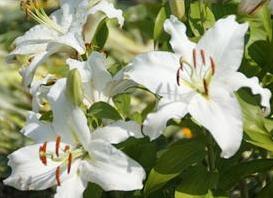
References:
1.The Masters and Their Retreats. Mark L. Prophet and Elizabeth Clare Prophet. Summit University Press, 2003.
2.The Human Aura. Kuthumi and Djwal Kul. Summit University Press, 1996.
3.Cryptograms of the East. Helena Roerich.
4.Stories the Holy Virgin’s Life on Earth with prophecies and foretypes pertaining to Her, teachings of the Church about Her, wonders and wonderworking icons of Hers. Based on the Holy Scripture, testimonies of the holy Fathers and church legends. 8th Edition. Moscow, Typo-Lithography of I. Ephremov, 1904.
5.Life of the Holy Virgin based on the books of the Menaion Reader. Compiled by Avdotya Glinka, 1904
[1] David, the first king of Judah and the third king of Israel (1055-1015 B.C. or 1010-970 B.C. according to the new chronology). In his youth, he became famous for fighting the Philistine giant Goliath. David was the progenitor of the only dynasty of Judah kings. In the Jewish legends, David was depicted as a role-model mighty king, brave warrior and spiritual poet. The authorship of Jewish religious songs, prayers and psalms is attributed to David. According to the Jewish beliefs, the Messiah was supposed to come from the line of David (Brockhaus and Efron Encyclopedic Dictionary).
[2] Aaron was the first pontiff of the Jewish people and the elder brother of prophet and lawgiver Moses (Exodus 28:1).
[3] Joseph (incarnation of Saint Germain) was sent to be the patron and protector of Mary and Jesus.
[4] Mother Mary and her sister Elizabeth developed an educational system for John the Baptist and Jesus when the latter were still children. This system is now known as the Montessori Method (from the book The Masters and Their Retreats).
[5] Those Three Wise Men were El Morya, Kuthumi and Djwal Khul.
[6] From the book The Cryptograms of the East by Helena Roerich.
[7] Bethany – is a village in Palestine near the Mount of Olives, from which Jesus made his last entry into Jerusalem
Mother Mary



